VW Tiguan vs Skoda Karoq – which is best?
June 24, 2022 by carwow staff
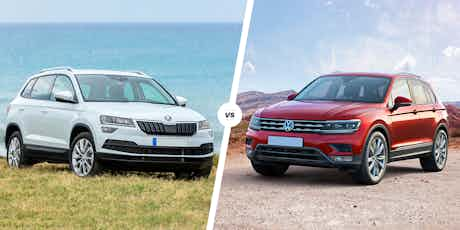
The Skoda Karoq is one of the best mid-size SUVs out there. But it has a big cousin, in the form of the Volkswagen Tiguan – remember VW owns Skoda. So does bigger necessarily mean better? Here’s the carwow guide to how they stack up against each other.
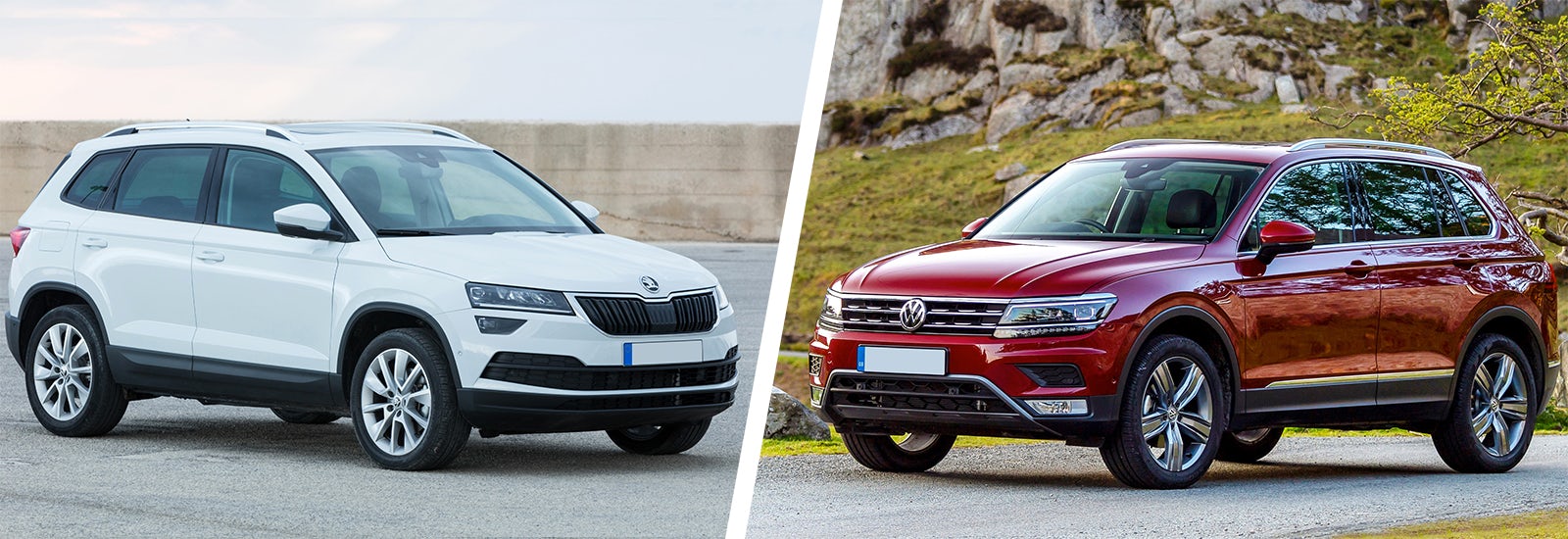
First, a bit of context. The Karoq is actually a size smaller than the Tiguan, its dimensions more closely matching those of the VW T-Cross. However, the T-Cross’s coupe-ish shape means it’s not as spacious and practical a car as the Karoq. Enough scene-setting, though. How do the Skoda Karoq and Volkswagen Tiguan compare?

Design
Viewed side-on, the Karoq and Tiguan actually look quite similar. They are, after all, the same sort of car and the job they do requires a certain shape. But the Tiguan is quite a lot bigger than the Karoq.
Though their shape is pretty much the same, the Karoq and Tiguan are very different in the details; their grilles and lights clearly identify these cars as a product of their respective makers.
Neither of these cars is particularly distinctive, but they’re smart and classy enough to fit in anywhere. Even the sporty Tiguan R-Line, with its big wheels and more assertive styling, doesn’t tip into looking garish.
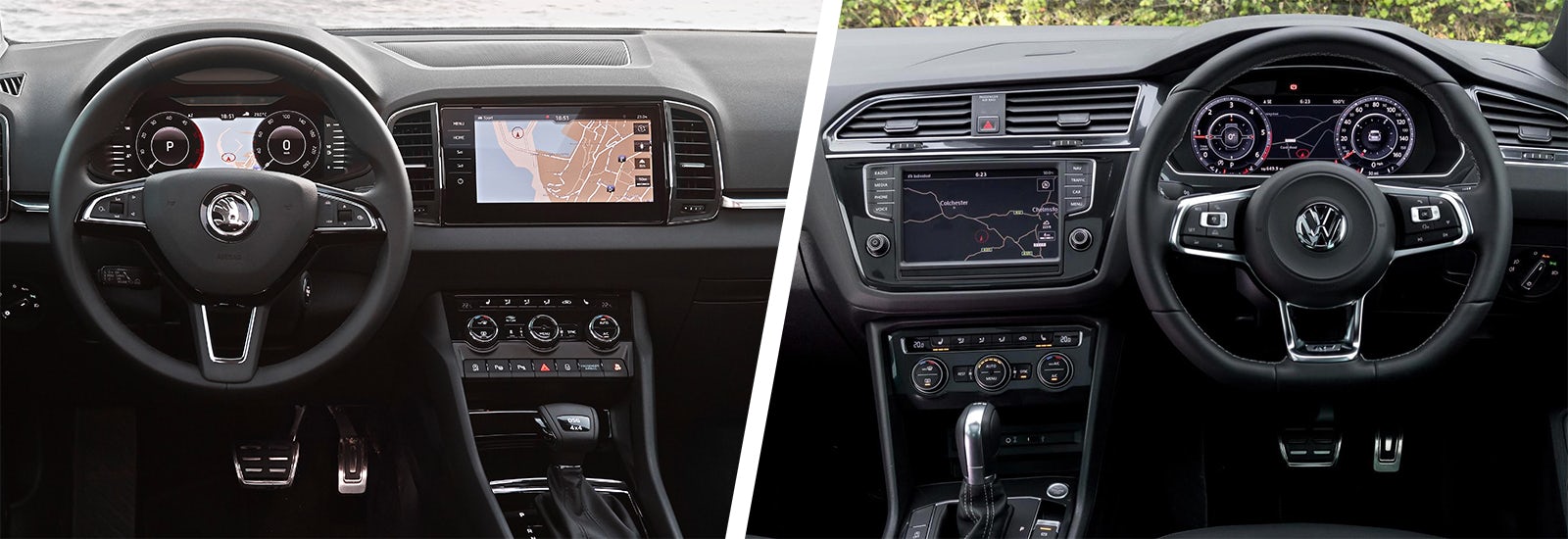
Interior and tech
The Karoq’s interior isn’t quite as nice as the Tiguan’s but that being said, you’d have to try the two back-to-back to really notice the difference.
Anyone sitting in a Skoda for the first time will be pretty impressed with the Karoq’s quality.
Every Karoq gets an 8-inch touchscreen infotainment system as standard and expensive-feeling finishes on the major touchpoints. Lower down, though, the plastics become a bit cheap and scratchy. Even entry-level Tiguans use more expensive materials but feel more basic than the Karoq. Higher-spec models, though, feel pleasingly premium.
Compare Karoq and Tiguan specs side by side
Both have logical dashboard layouts that make finding the button you want easy and build quality isn’t a worry either, as both cars are robust enough to soak up the worst abuse a family could throw at them.
The only real downer is that both the Karoq’s and Tiguan’s interior colour schemes are rather dark. Adding a sunroof will brighten the place up considerably.
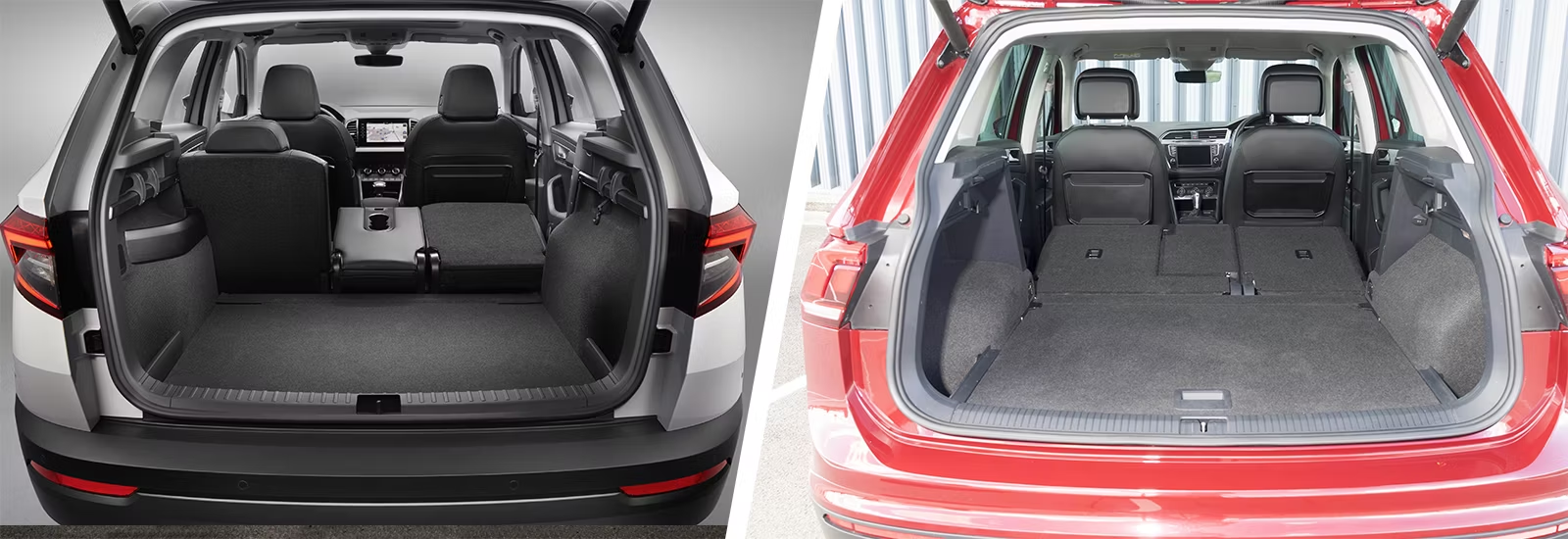
Practicality and boot space
Both the Karoq and Tiguan are extremely spacious inside, but the difference in size between the two does have an effect. You can fit three adults in the back of a Karoq, but shoulder and headroom will be tight. The wider, taller Tiguan will be more comfortable for them.
Likewise, a six-foot passenger can sit behind a six-foot driver in the Karoq, but they’ll last longer in the Tiguan before needing to stretch their legs.
It’s a similar story with boot space. The Karoq has 588 litres with the rear seats in place, while the bigger Tiguan has 615 litres. However, Skoda’s VariFlex rear seats (fitted to higher-spec models) can be removed entirely, freeing up a whopping 1810 litres of space, while the Tiguan only has 1655 litres. Indeed, the Karoq has so much space it’s on-par with some considerably bigger estate cars.
Both cars have some clever details that help make filling the boot and securing loads easy – the Tiguan’s boot floor can be raised level with the loading lip, for instance.
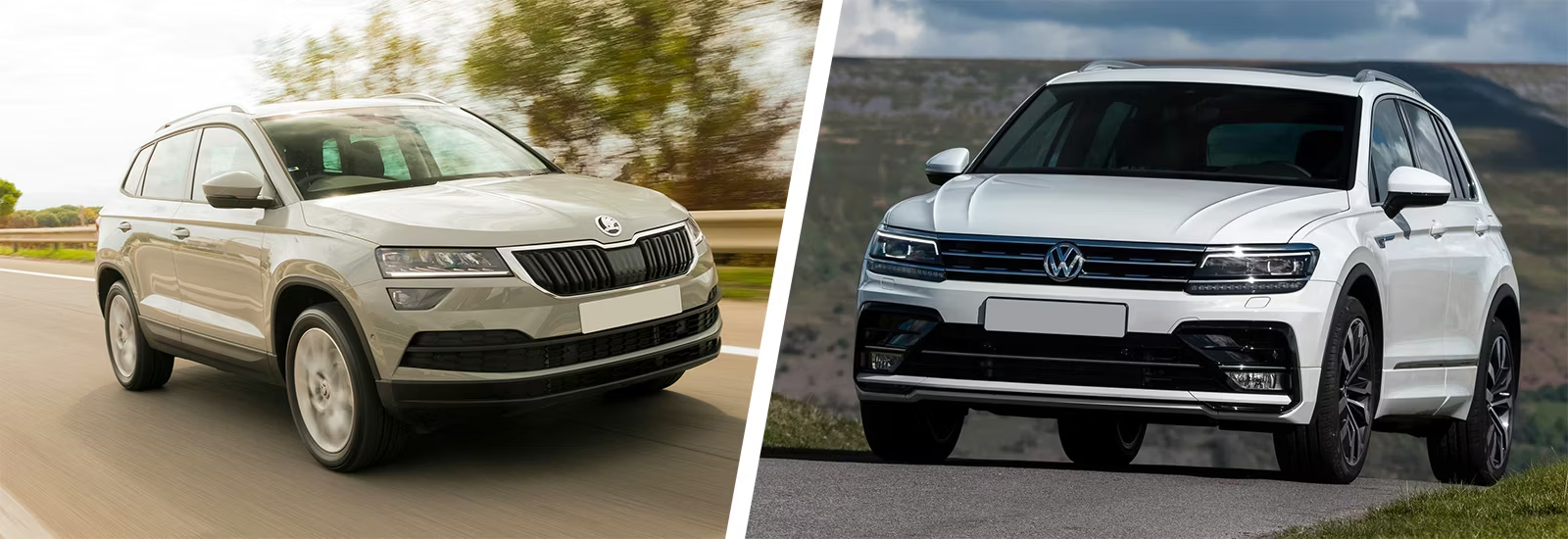
Engines and driving
The Karoq is available with two petrol and two diesel engines. Petrol choices are a 115hp 1.0-litre and a 150hp 1.5-litre. The former is a keen little engine that returns good fuel economy around town. But it’s a bit underpowered for regular, long journeys. For those trips the 1.5 is a better bet; it’s plenty powerful enough and returns around 40mpg in real-world driving.
If you are after a diesel, the 2.0-litre 150hp unit is probably the best option. It’s not as economical as the 115hp 1.6-litre, but its standard four-wheel-drive is useful.
It’s a similar story with the Tiguan. The 150hp 1.5-litre petrol covers all the bases well and returns 40mpg-plus. Diesels with as much as 240hp are available, but the 150hp unit is the best compromise between performance and economy.
Four-wheel-drive and DSG automatic gearboxes are available on certain models of both cars.
It’s worth noting that the Tiguan is the more capable car for towing, especially with the more powerful diesel engines.

Prices and running costs
Being a smaller car, the Karoq is a chunk of money cheaper than the Tiguan. Prices start at £26,225 for the Karoq SE Drive, which gets 17-inch alloy wheels, rear parking sensors, an infotainment system and climate control. Tiguan prices start at £29,550 for Life model, which comes with 18-inch alloys, LED headlights plus an infotainment system. It’s worth highlighting that while the entry-level engine with the Karoq is a 1.0-litre petrol with 110hp, the T-Roc range kicks off with a 1.5-litre petrol engine with 130hp.
Opt for a top of the range Karoq (a four-wheel drive Sportline with the DSG gearbox and the 2.0-litre diesel engine) and the bill hits £38,515, while the Tiguan R-Line 4×4 DSG 2.0-litre diesel comes in at £42,420. There’s also the high-performance Tiguan R, which features the same 320hp 2.0-litre petrol engine as the Golf R and costs £48,540.
In terms of running costs, the entry-level 110hp 1.0-litre petrol Karoq officially returns 46.1mpg and emits 138g/km of carbon dioxide, making the first year of road tax £230. Opt for a 116hp 2.0-litre diesel and economy grows to 59.4mph, while CO2 emissions of 125g/km shrinks the first year of road tax to £190. After that period, road tax is a flat annual rate of £165, unless you’ve managed to specify a Karoq above £40,000 from new, when a surcharge of £355 a year runs from years two to six of the car’s life.
As for the Tiguan, the entry-level 130hp 1.5-litre petrol engine officially returns 44.1mpg and emits 144g/km of CO2, so the first year of road tax is £230. The 150hp 2.0-litre diesel model sees economy improve to 54.3mpg, while the first year of road tax for this car is also £230. After the first year the same rules apply to the Tiguan as the Karoq, but it’s a fair bit easier to top the £40,000 mark with the Volkswagen, so keep an eye out for hitting the road tax surcharge if you opt for it.
All engines available with both cars meet the latest emission standards, so you shouldn’t have to pay any of the low-emission zones that have started to appear around the country.
Safety and reliability
Safety is important to the family buyers who make up vast number of Tiguan and Karoq buyers, so it’ll be reassuring to know that both scored the full five stars when crash tested by Euro NCAP.
Both cars come with an industry-standard three-year/60,000 mile warranty, and their proven mechanicals mean you should expect a relatively dependable car, whichever you pick.
VW Tiguan vs Skoda Karoq – Verdict
Both the Skoda Karoq and Volkswagen Tiguan are excellent family cars with tough, flexible interiors. However, the Karoq’s smaller size might make it a bit of squeeze for older children. The Tiguan will likely have a longer service life, as children are less likely to out-grow it.
Either way, both cars will be dependable companions that slot easily into the life of any family. Which one is best for you ultimately comes down to how much space you need.
Tiguan and Karoq review videos
Want the full lowdown on each of these cars? Check out Mat Watson’s verdicts on both.
















